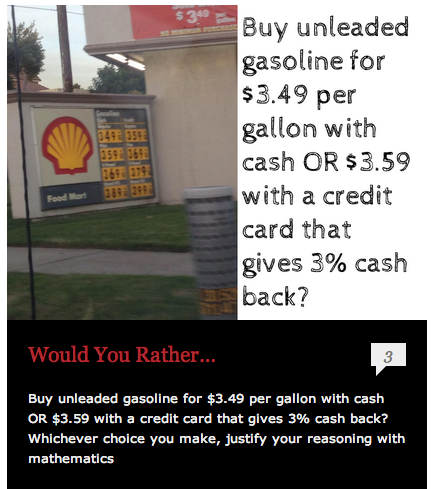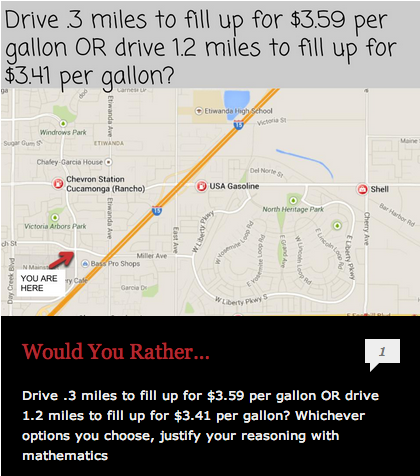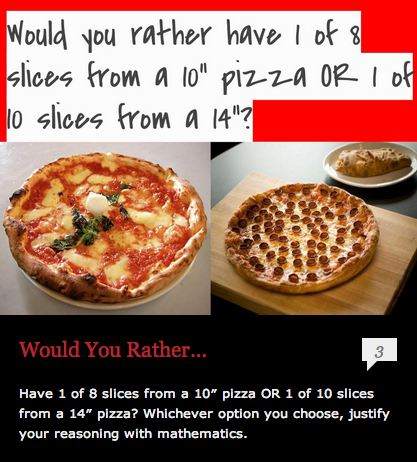While presenting at the California Math Council’s Palm Springs conference earlier this month, I met John Stevens. He directed me to
I tried three of these questions with my students last week. In the first one, students had to decide whether to purchase gas for $3.49 a gallon using cash, or $3.59 with credit and receive 3% cash back.
At this point, they weren’t sure where to stand. They realized that there was a lot more math to this question than they originally saw. They also realized that some math problems have no clear-cut solution. I bet they will think about this when they see a similar sign at a gas station in the future.
They had many opinions on this, and realized that now it did matter how much gas they were buying and whether their car got good gas mileage. My northern California students wanted to know where the stations are. I recognized the map of Rancho Cucamonga in southern California, and they wanted more information about the area, its traffic, and whether or not I was driving up highway 15 or not.
Some students tried to draw diagrams but realized they were not completely accurate. “It’s too bad you can’t draw these to scale on your Interwrite Board, Kabrina lamented. I began by drawing two circles to scale with radii of 5 units and 7 units. She came to the board, and she used the line tool and protractor tool to make accurate drawings which helped many students make their decision.
Other students multiplied and got the fractions 10/8 and 14/10. I asked them if they saw a problem with that approach, and they couldn’t see why it wouldn’t work. I asked them what the 10” and 14” represented, and they saw that it was the diameter of the pizzas. I explained that when you buy pizza you are not buying length but rather area. We then calculated the areas as 25π and 49π. They saw that the 14” pizza had almost twice the amount as the smaller one. They were then sure that 1/10 of the 14” pizza was a better deal.
These problems showed students that math in the real world is complex and cannot always be solved simply by applying a procedure or algorithm. Real world math takes numerous factors into consideration, and the answer is often not clear. Rather math gives us the data we need to help us make decisions in line with our preferences.
[1] I say real-world applications as opposed to the word problems we often find in which mathematics is applied to a contrived situation that we would never encounter in real life. For example, using the Pythagorean theorem to find the diagonal length of a rectangular swimming pool is not a problem we would ever solve in the real world. Even if we wanted to know such an unusual fact, the same tape measure we used to find the length and width of the pool could be used to measure its diagonal.



 RSS Feed
RSS Feed